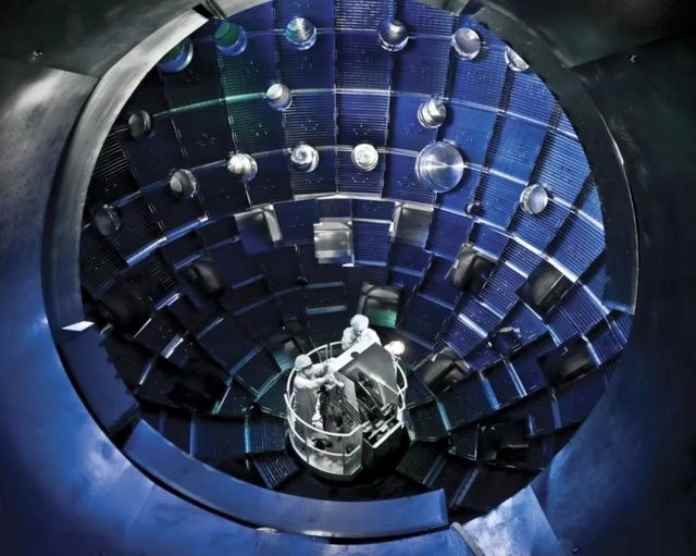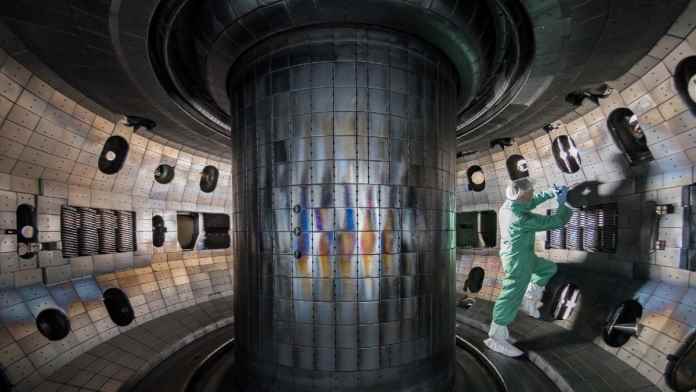US scientists have reached an important milestone in their attempt to perfect a process that could potentially provide an almost unlimited source of energy. Nuclear fusion does not rely on fossil fuels or produce harmful greenhouse gases, so it could also help fight climate change.
What is nuclear fusion?
Nuclear fusion is the process that gives the Sun its energy. Scientists from more than 50 countries have been trying to recreate it on Earth since the 1960s.
They hope they can eventually provide massive amounts of clean energy for the world.
In nuclear fusion, pairs of tiny particles called atoms are heated and forced together to form a heavier one.
It is the opposite of nuclear fission, in which heavy atoms break apart. Nuclear power plants currently use nuclear fission to generate electricity.
Why is nuclear fusion so important?
Nuclear fission produces a large amount of radioactive waste that can be dangerous and must be stored safely – potentially hundreds of years.
Waste produced by nuclear fusion is less radioactive and decays much faster.
Nuclear fusion does not need fossil fuels like oil or gas. It also does not produce greenhouse gases that trap the Sun’s heat and are responsible for climate change.
Most fusion experiments use hydrogen, which can be cheaply extracted from seawater and lithium, meaning fuel sources can last for millions of years.
It has been described as the “holy grail” of energy production. So it is very valuable.
How does nuclear fusion work?
When two atoms of a light element such as hydrogen are heated and combine to form a single heavier element such as helium, the chemical reaction produces an enormous amount of energy that can be captured.
But bringing two identical elements together is actually very difficult.
As the positive terminals of two batteries have the same charge, they naturally repel each other.
A lot of energy is needed to overcome this resistance.
On the Sun, this happens thanks to extremely high temperatures of around ten million degrees Celsius and significant pressure of more than 100 billion times that of Earth’s atmosphere.
On Earth, scientists have used a variety of different techniques to try to recreate these conditions.
But it turned out to be very difficult to maintain the high temperature and pressure needed for long enough.
The USA’s National Ignition Facility (NIF) has announced that it has successfully used a 192-beam laser to convert very small amounts of hydrogen into enough energy to power about 15-20 kettles.
This means that for the first time, scientists are able to generate more power from the lasers involved in the experiment.
When will large-scale nuclear fusion be possible?
Despite a number of promising breakthroughs over the past few years, large-scale nuclear fusion is still a few years away.
In February, European scientists at the UK-based JET lab broke their own world record for the amount of energy produced in five seconds.
But even the successful NIF experiment in the US didn’t generate more energy than was needed to power the lasers in the first place, and the research program to get to this point cost billions of dollars.
While physicists in the US welcome the results – and describe them as a real breakthrough moment – they point out that much more work is needed before nuclear fusion can be used to power homes or businesses.
Scientists will now focus on reproducing fusion faster and cheaper.

How safe is nuclear fusion?
The International Atomic Energy Agency (IAEA) has described nuclear fusion as “intrinsically safe”.
The conditions required to initiate and maintain a fusion reaction are so extreme that it is impossible for it to get out of control.
“Fusion is a self-limiting process: if you can’t control the reaction, the machine turns itself off,” said Sehila González de Vicente of the IAEA.
The lower levels of radiation waste produced by the process are also much easier to handle and store than nuclear fission.
Can nuclear fusion help tackle global warming?
Nuclear fusion does not rely on fossil fuels such as oil or gas and produces none of the greenhouse gases that trigger global warming.
Unlike solar or wind energy, it is not dependent on beneficial weather conditions.
It uses two relatively abundant materials found on Earth: lithium and hydrogen.
Widespread use of nuclear fusion could help countries meet their goals of producing “net zero” emissions by 2050.
However, it will take many years before recent experimental successes can scale up meaningfully.
